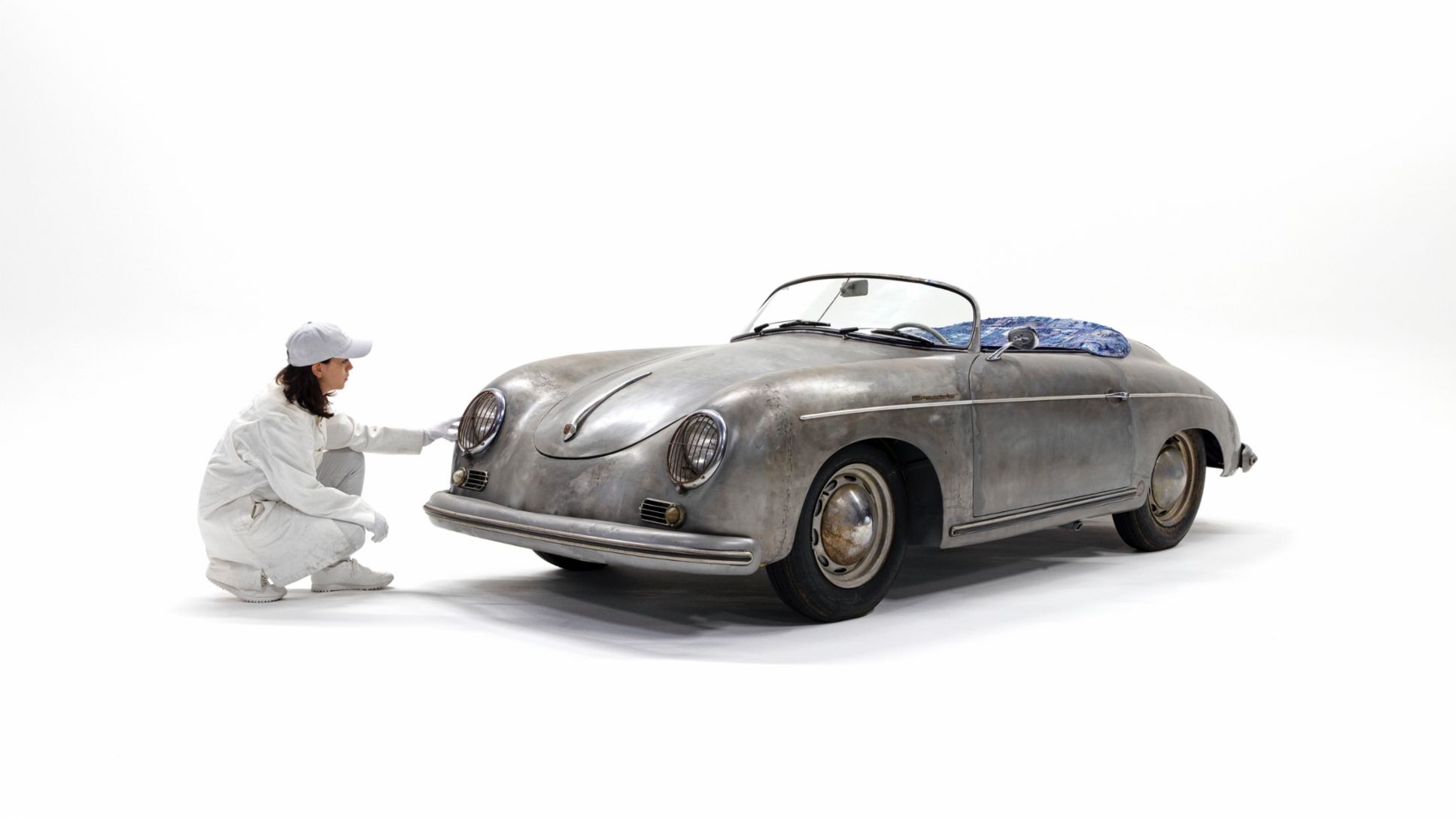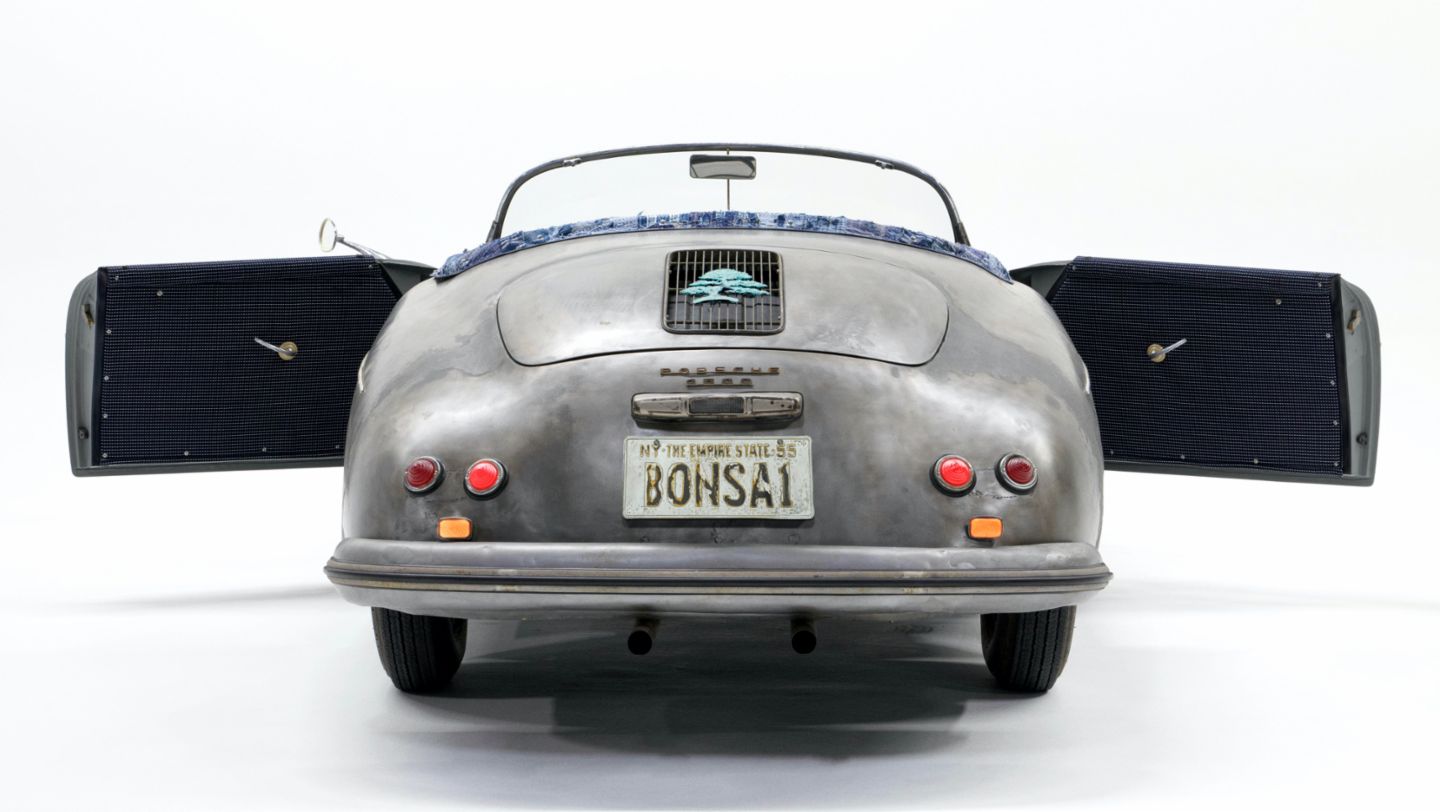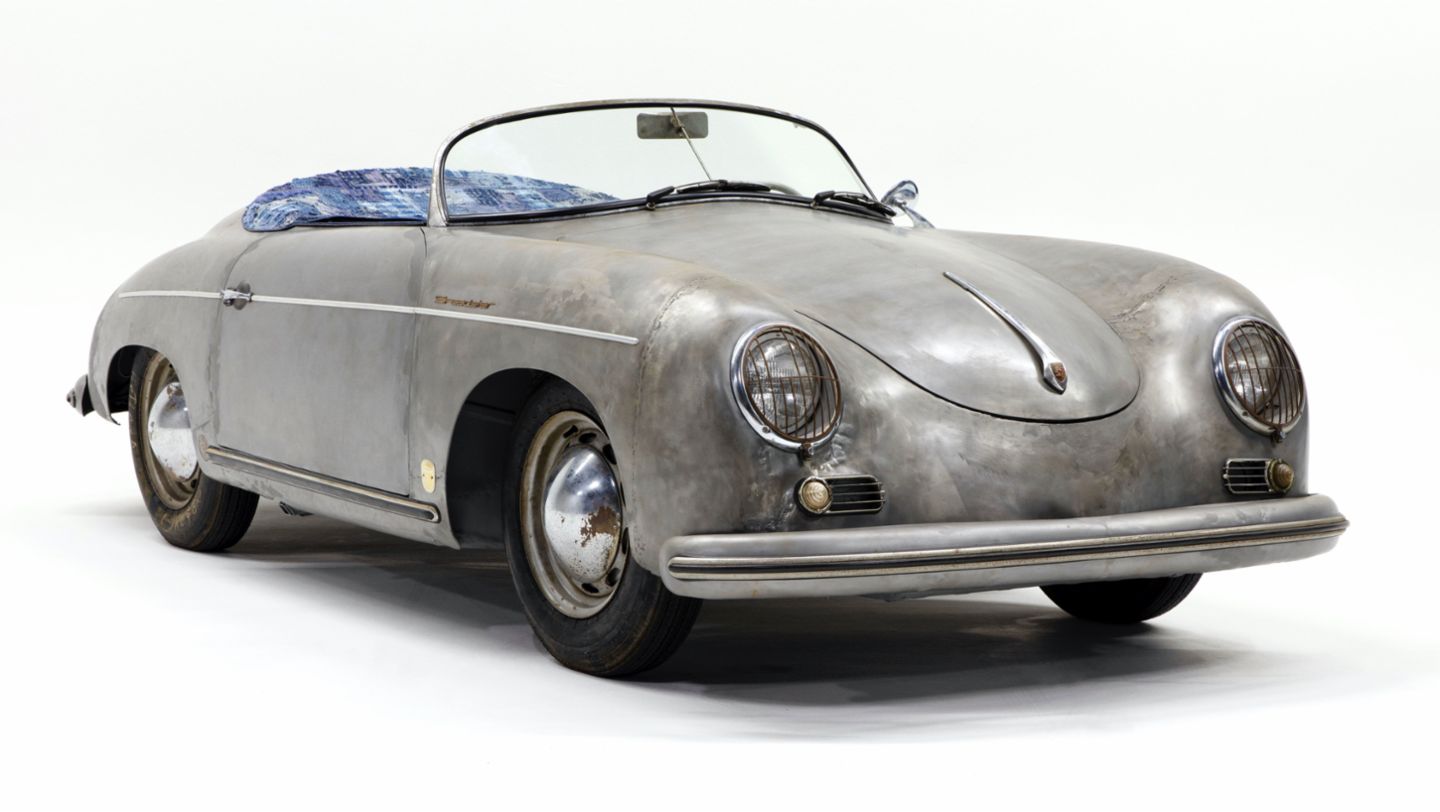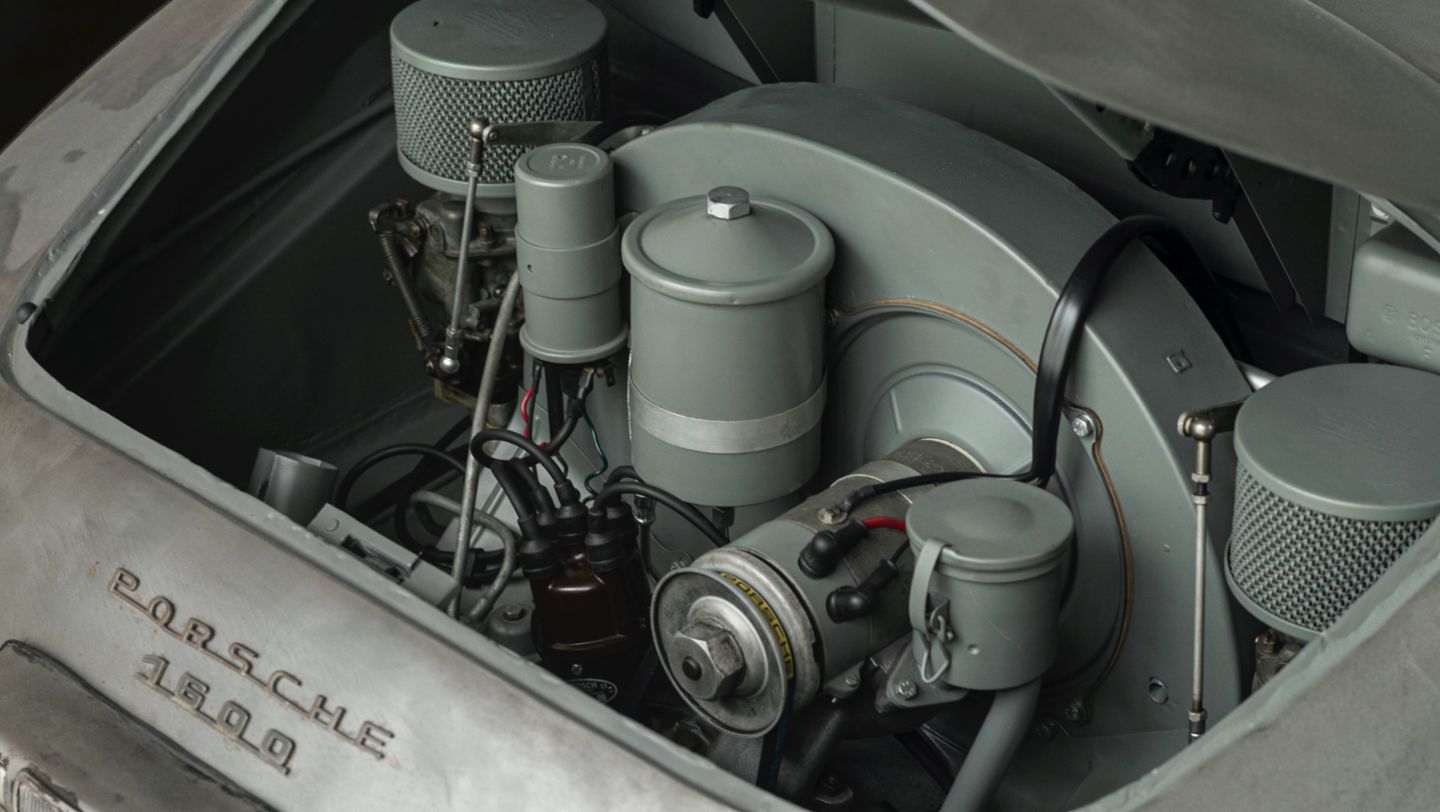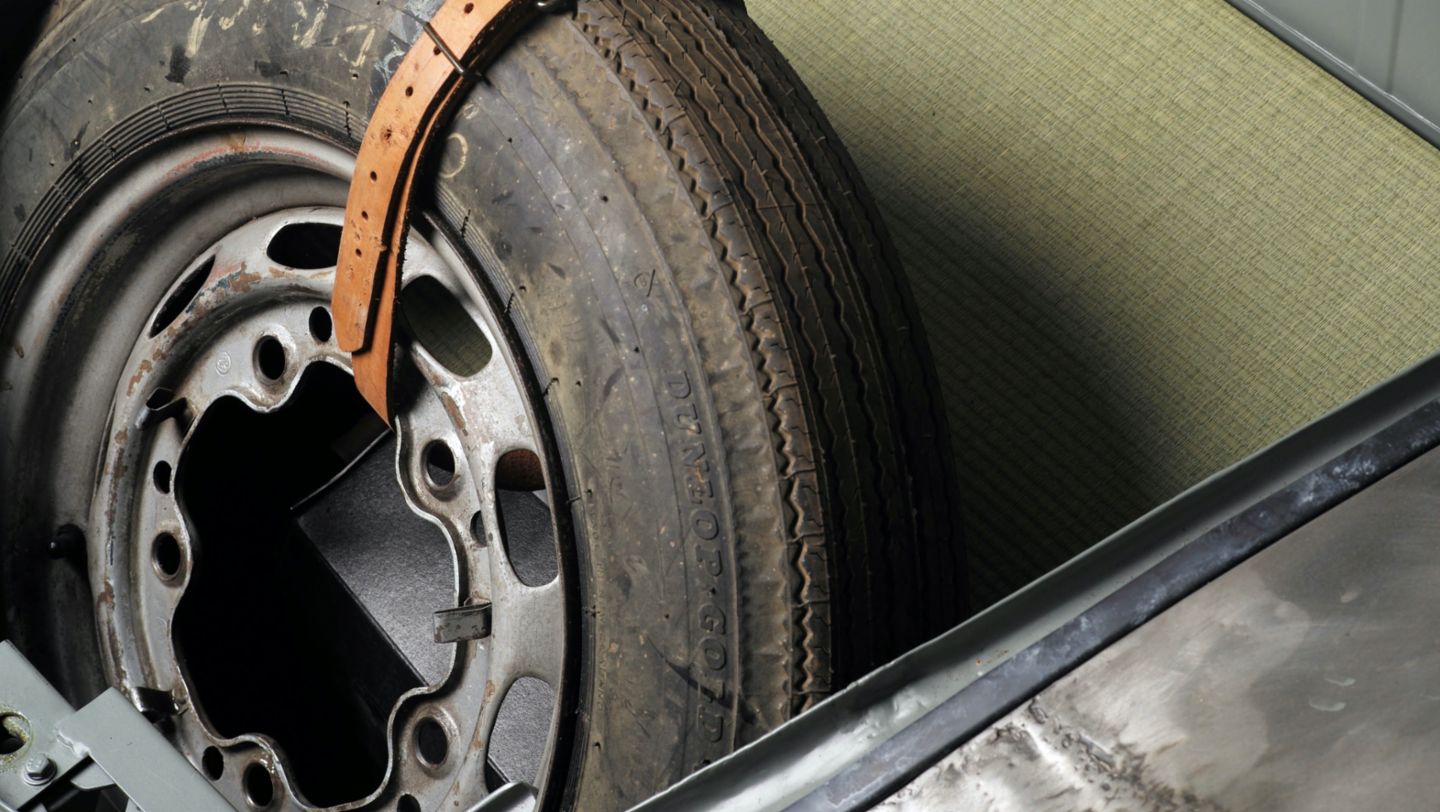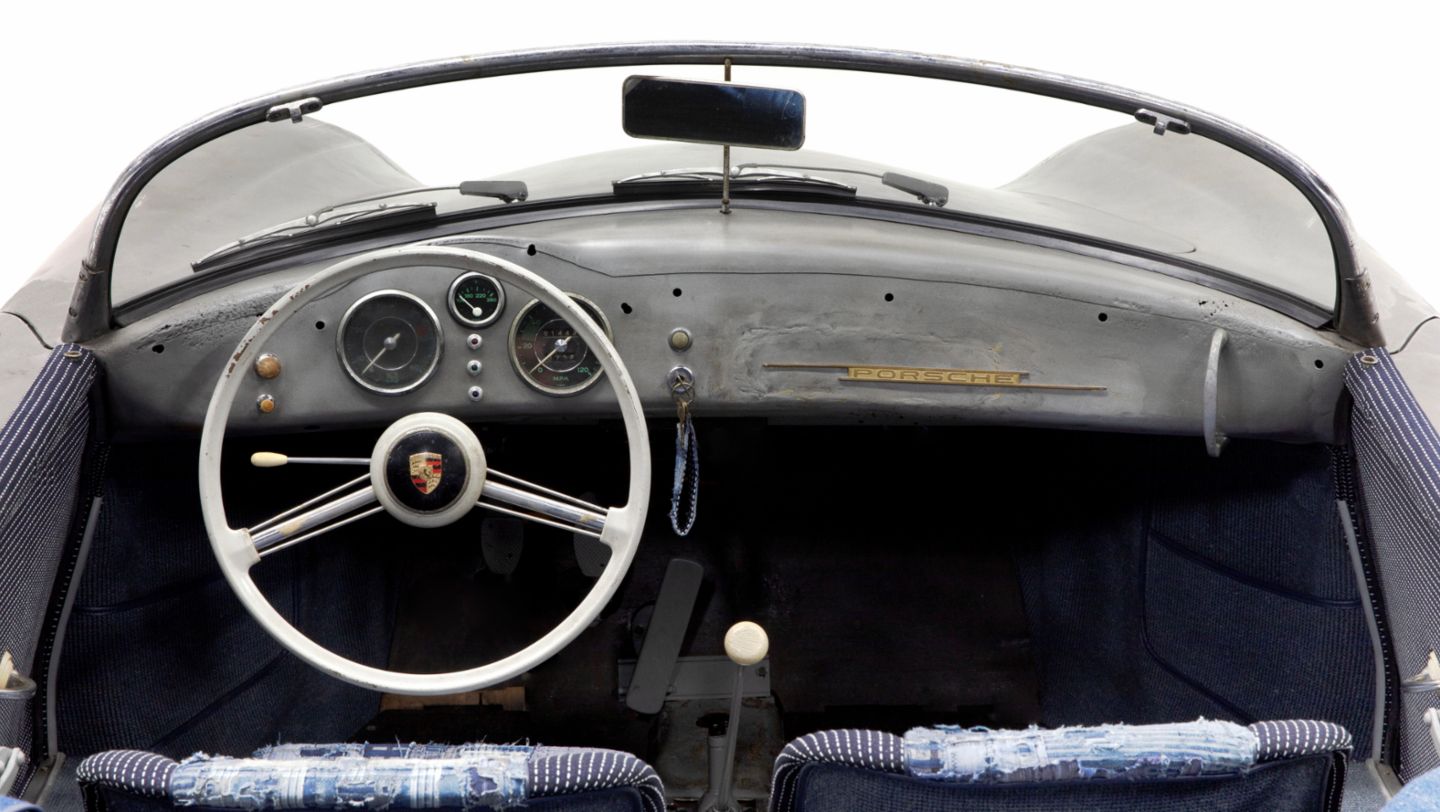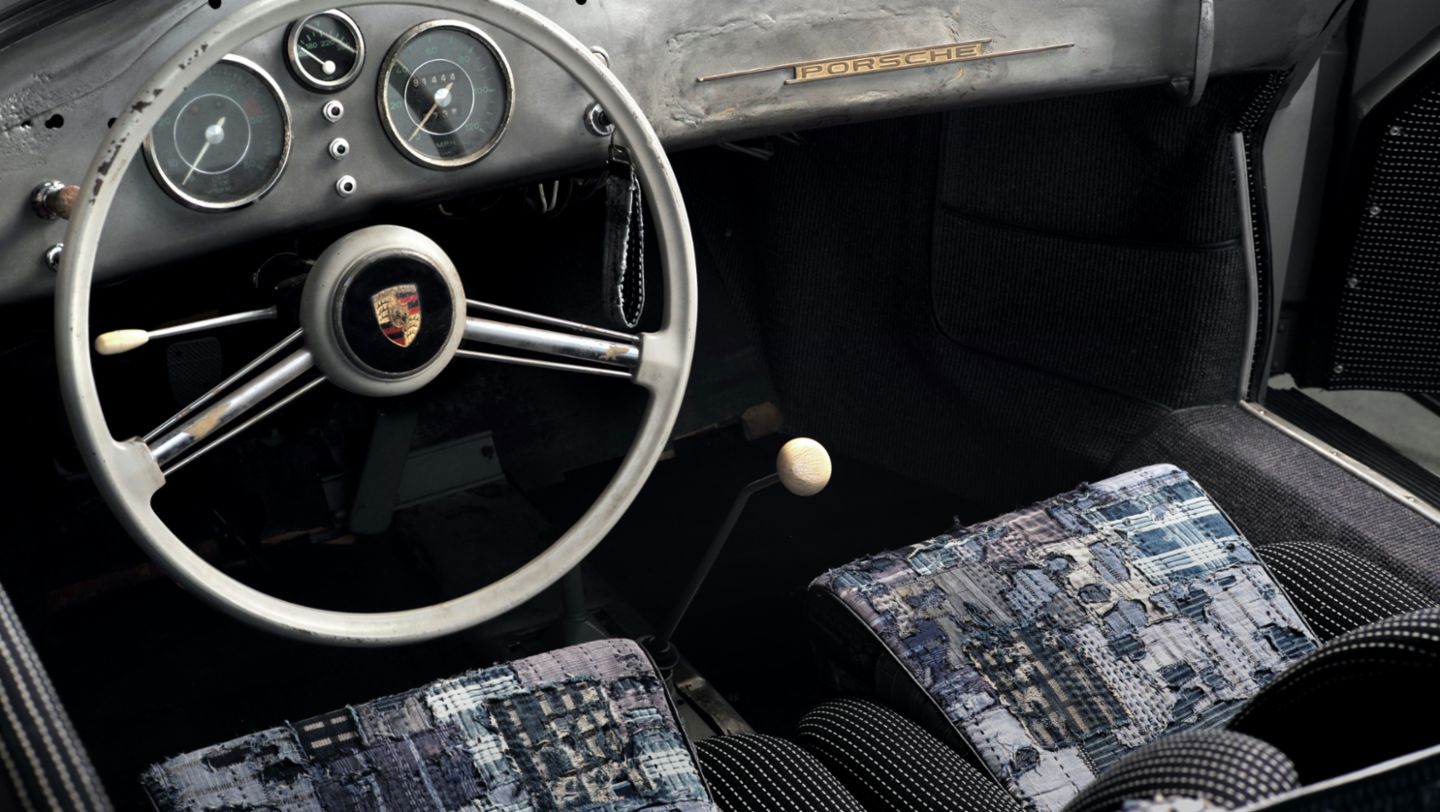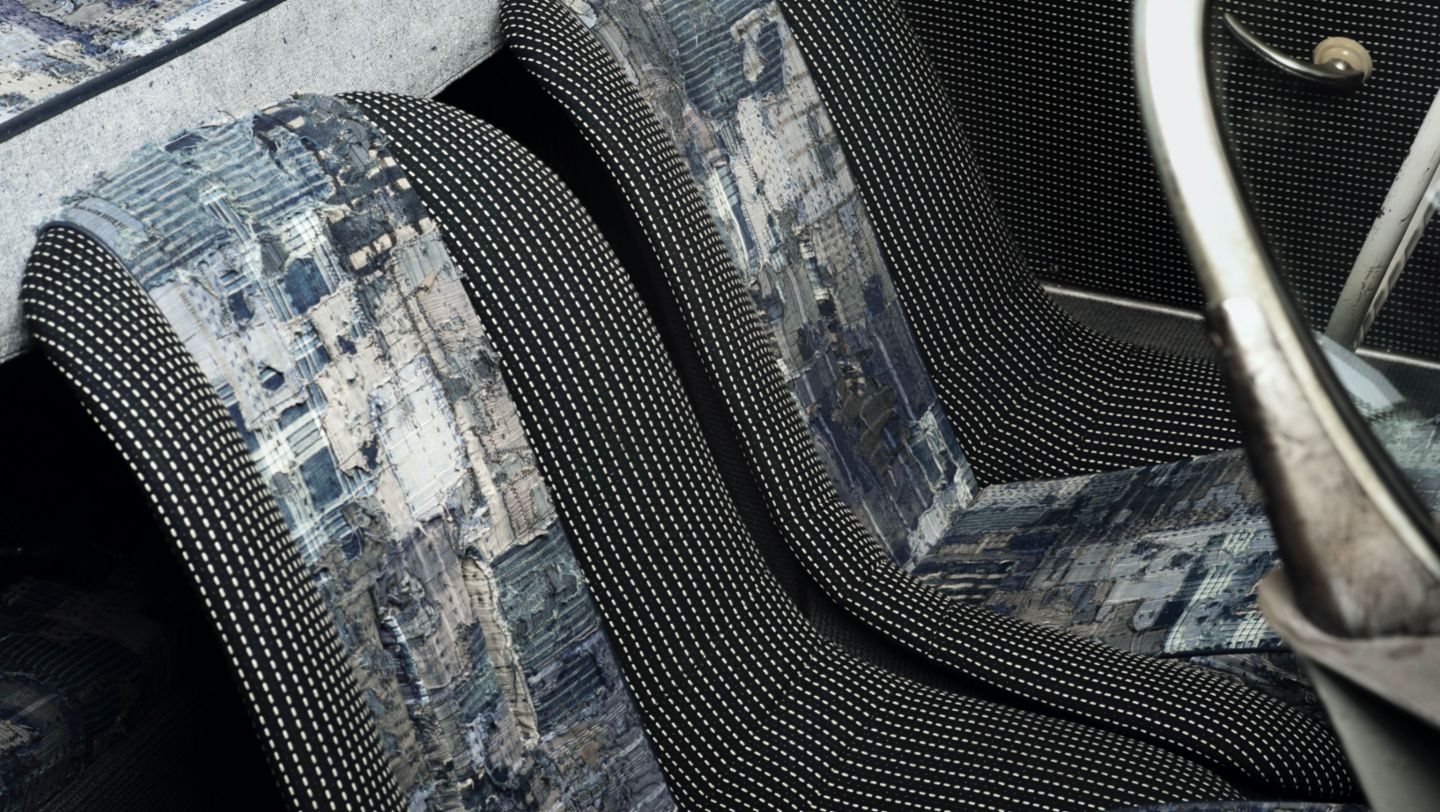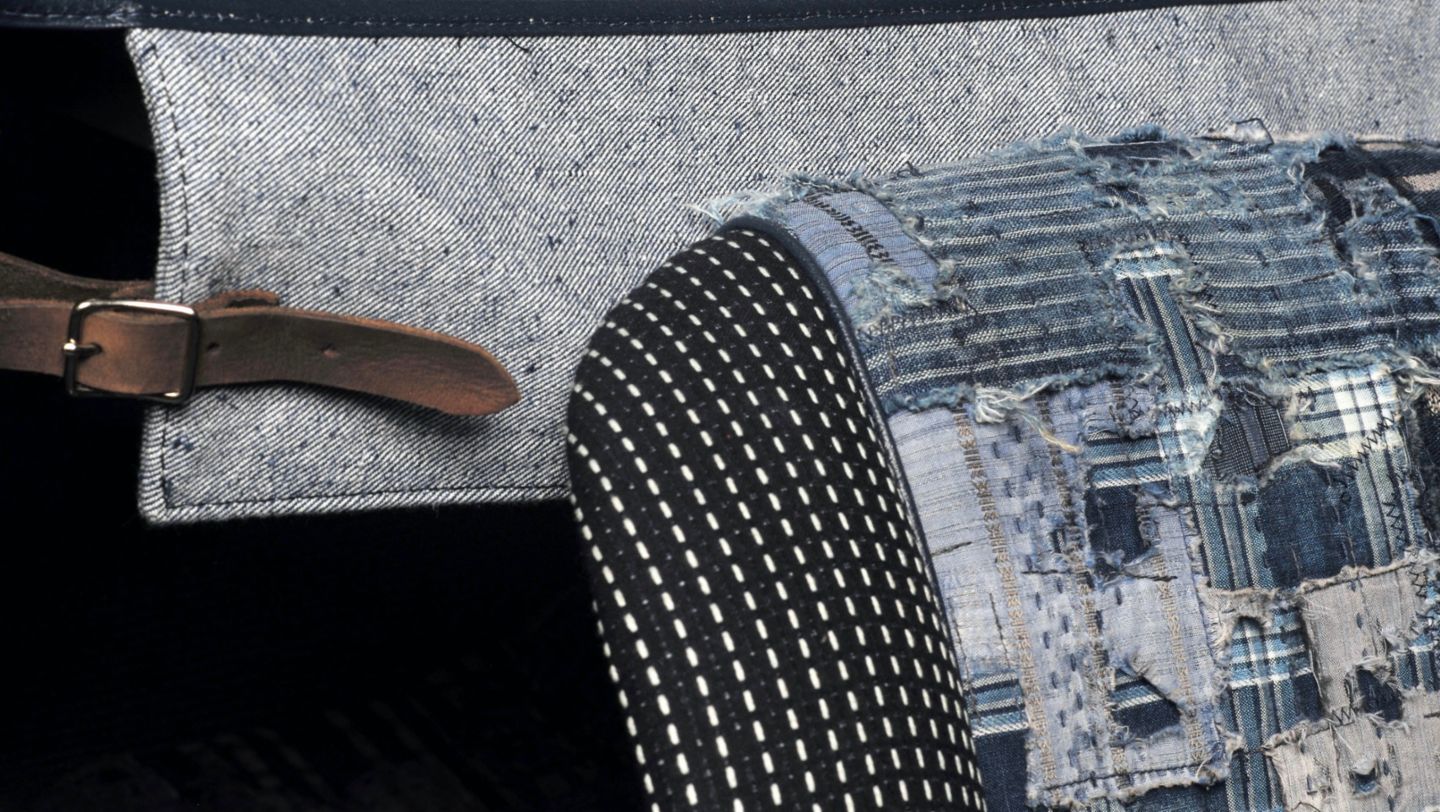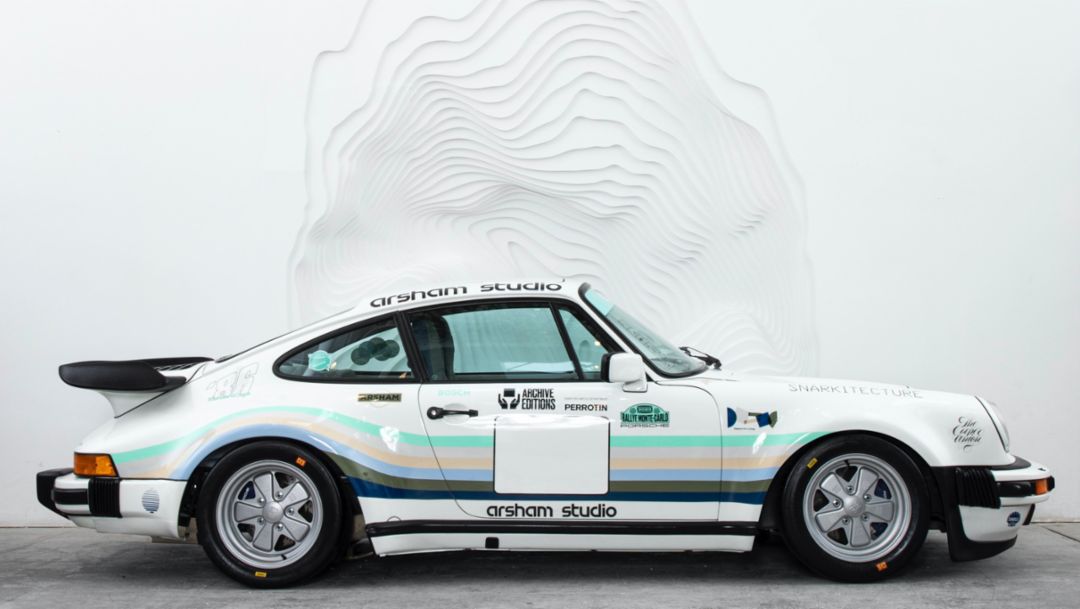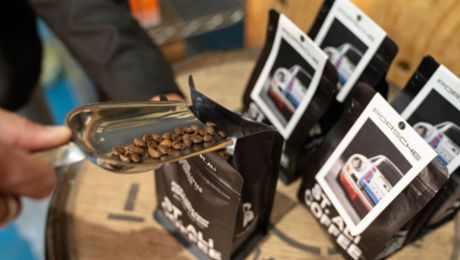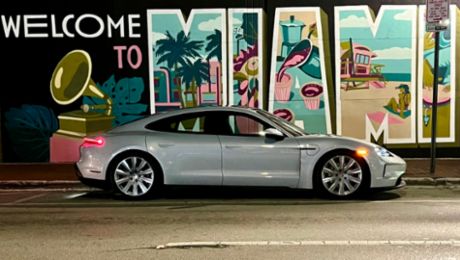Over the span of two years, Arsham took steps to reveal the vehicle’s age and wear, leaning into the car’s production history, inspired by Arsham’s reverence towards Japanese culture and its many specialized craftspeople. The acceptance of ‘imperfection’ and finding peace in the natural processes of time come through in both the stripped-down raw metal exterior and the indigo-dyed interior of the 356 Bonsai.
For the exterior of the 356, Arsham has stripped all of the paint from the car, removing the original finish and years of restorations, revealing all of the welds, pit marks, and natural wear over the course of time. Now, only a layer of linseed oil protects the raw metal from the elements, in accordance with original Japanese manufacturing processes. On the rear engine grille of the vehicle, Arsham has added a patinated bronze relief in the shape of a Bonsai tree. However, the patinated exterior does not stop at the body, as the artist also found all-original well-worn components for the rest of the exterior - from the headlight covers to the vintage license plate.
Though the exterior of the car may appear worn, the 356 Bonsai is fully drivable, with all components related to function, including the original numbered engine, having been restored to off-the-factory-floor level. For the technical works, Arsham collaborated with Willhoit Auto Restoration and the Bridgehampton Motoring Club.
“The 356 sits in such an interesting position within the Porsche catalog as the starting point for the heritage brand,” says Arsham. “The nearly 70-year-old vehicle contains the roots of the modern Porsche brand that we know and love in the purest form.”
Textiles rich in tradition and old processing techniques
Arsham ruminates, “Throughout my career, I have looked to Japan as a source of inspiration for their love and dedication to craft. These sensibilities were the base for the Bonsai 356. We produced all textiles in Japan using traditional craftsmen.”
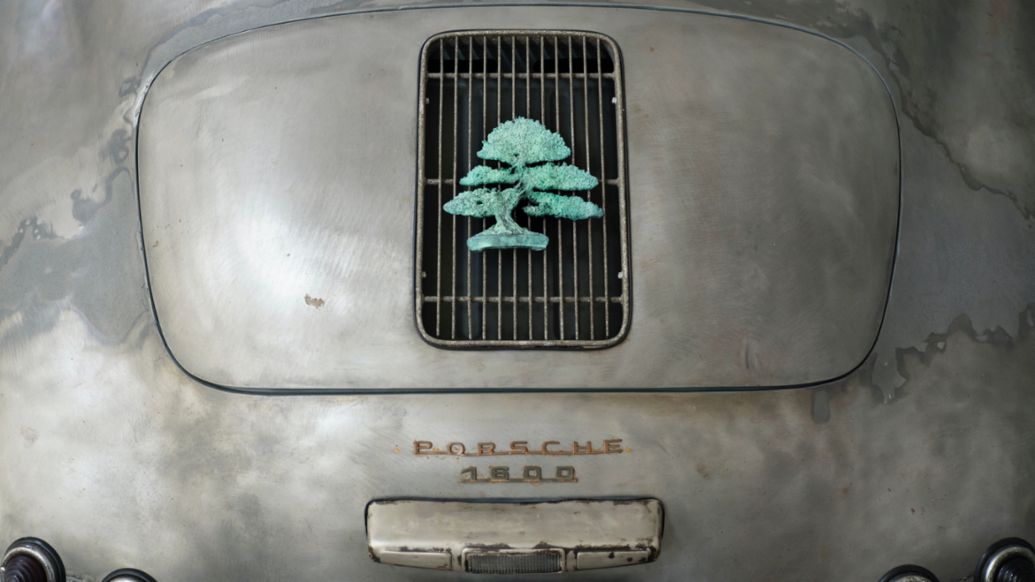
For the interior of the vehicle, the artist worked alongside Japanese fashion designers Motofumi ‘Poggy’ Kogi and Yutaka Fujihara to outfit the complete interior with traditional Japanese fabrics from boro patchwork to Japanese selvedge denim. For the driver and passenger seat, along with the boot cover, these are made of indigo-dyed boro patchwork textiles. Originally, this Japanese mending technique was used to extend the quality and durability of garments, embracing the natural wear and tear of local workwear. Alongside the boro, Arsham added more indigo-dyed cotton fabric punctuated with sashiko-stitched lines on the door trim and edge of the seats. As the final fabric, Arsham and team produced a Japanese denim to upholster the roof, covering the car’s interior. These three fabrics come together to enhance the Wabi Sabi influence on the car as a whole - selectively choosing materials that are intended to progress with use and age.
In the trunk, a Japanese tatami mat sits under the spare wheel in the luggage compartment. Made of rice straw, these mats are a classic element of Japanese architecture, and are usually fitted as a floor covering in living areas. The connection between the car interior and home architecture is a detail that nods to the artist’s admiration of omotenashi, like wabi-sabi, better experienced than explained: warmth and the welcoming of guests into a household.
About Daniel Arsham
Daniel Arsham was born on 8 September 1980, in Cleveland, Ohio and raised in Miami, Florida. As an iconic artist of our time, Arsham breathes new life into the everyday, experimenting structurally to connect past, present and future in unexpected forms. His work is distinguished by subtle changes, in particular when he amalgamates objects in order to transform familiar structures. The 356 Bonsai is Arsham’s third project involving a car from the Zuffenhausen-based sports car manufacturer. Porsche Japan plans to exhibit the 356 Bonsai in Tokyo at the end of the year.
